 |
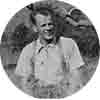 |
LIFE IN AUSTRALIA After 28 days on the water on 23rd March they entered Sydney Harbour at 10am cruising under the Harbour Bridge* to a commercial dock. Here their luggage was unloaded and transferred to a train nearby. It took all day to unload the ship and that evening about 6pm the train departed. The family sat and watched the scenery through the window. The train traveled very slowly past old dusty tunnels full of locomotive smoke. The light in the carriage was so dim one could not even read. Then the train began to travel faster and one could see lights in single story houses, lit up tennis courts and players in white outfits. The train had traveled already for one hour and their son Erik, now 10 years old was looking at everything with great interest and amazement. Slowly the houses and lights disappeared until there were only bushes and countryside. Bathurst Holding Camp The hours passed and at midnight the train stopped at a town in NSW called Bathurst. This was a Holding Camp for Immigrants in NSW. Luggage was unloaded in the dark of night. Finally Ervins and family were shown their barracks and room together with another Latvian family. They found their beds and slept their first night in Australia only to be awakened by a bright morning light, visions of gum trees and the loud chirping of birds. Work on the NSW railway In as little as one week the men in the camp were assigned work. Because Ervins had been a road engineer in Latvia he was assigned work on the NSW Department of Railways in Sydney. He and about 100 others now had to make the rail journey back to Sydney. Ervins describes how in the Railway Store yards the men were registered, given blankets, cutlery and a small amount of pocket money to get them through to their first pay day. The workers were housed in small barracks 9 x9 feet square made out of fibro for two people. Construction of all of these had not finished and some people had to sleep in large tents - Ervins was one of these. ErvinŐs place of work was Chullora Railway yards where he worked for 2 years fixing and renewing signals, railway crossings and cabeling. Two years was the required time that immigrants were required to work out their contract. At Chullora he remembers there were 16 people - 8 Australians, 4 Latvians, 2 Poles and 2 Albanians. All of them had a good laugh when talking because they did not understand each other's language!! After 5 months Ervins and his work partner moved into a fibro barrack which could be locked. Now they were protected from the elements and from burglars. Life in Parkes, NSW Ervins was allowed to visit his family every second week-end and Railway workers were given a free train pass. Ervins did not have to travel back to Bathurst however as his wife Anna and son Erik and father Ernests were only in Bathurst for 2 weeks. They had been transferred to Parkes, about 400km west of Sydney. This was a hot place in summer with lots of insects and snakes. Erik would have panic attacks when he saw large spiders crawling up the walls and ceilings in his room. The long 12 hour train trip every fortnight by Ervins was diabolical in carriages that were old and in disrepair and very cold in the winter months. At Parkes Anna Apinis befriended another lady called Mrs Silins. Mr Silins also worked in Sydney and he began to travel with Ervins every fortnight. Anna was keen to set up her weaving loom and got Ervins to help her set it up in their little room leaving only enough space for a bed. Anna put him to work in many ways eg helping make shuttles and other bits and pieces for the loom. Over time Ervins invented an unplying machine to unply 5 and 8 ply knitting wool for finer weaving work. Mrs Silins became involved not only in weaving but also started a school for all the Latvian children at the camp. Mr Silins formed a small choir and so in Christmas 1950 they put on a performance in hot, sweltering conditions, a far cry from Christmas in Europe! Life in Greta, NSW Many men started to complain about the long 12 hour trip to Parkes from Sydney and later many families including Anna, were moved to Greta not far from Newcastle. This trip only took 4 hours. Conditions in Greta were better and in a greener environment. Anna once more set up her loom at Greta and thought about weaving. Ervin's work did not change. He and Mr Silins began saving money for a house.
|
Move to Chullora, Sydney In 1951 Mr Silins took out a loan and bought a 3 bedroom house at 900 Hume Highway in Chullora, a suburb of Sydney. Mr Silins agreed to pay off two thirds and Ervins could move in with his family if he paid off one third with a deposit of 60 pounds. The deal was done and after 19 months of camp life the Apinis and Silins families came together sharing a home of their own. There were many in the house - Ervins, Anna, Erik, Ernests, Mr and Mrs Silins, son Uldis, Mrs Silin's sister Mrs Dekis and her daughter Maruta - 10 people all together. The following year in 1952 on 24th October, Anna had a daughter, Anita at Stanmore hospital. She was christened by Pr. Skujins on 5 September 1953. Not much later Mrs Dekis and Ernests died. To improve his English Ervins began to do a correspondence course. He also started to attend college part-time to learn welding and electronics finishing his course in 2 years. Ervins also built a room behind the garage for Anna's weaving loom and a bedroom for Erik. Ervins and Anna lived with the Silins family for 6 years. These were not easy years - there was much hard work. When the two year Government contract finished Ervins continued to work for the NSW Railways and was based in Clyde. Here he had his small workshop and he became a very good welder doing this until he retired at 65 years of age. Anna was able to earn money with her weaving by filling orders for national costumes, cushions, table runners, wall hangings, rugs, curtains and many other articles. However, she wove only part-time as she was employed in Chullora in a grocery store owned by a Latvian businessman, Mr Berzins, who owned a bakery called "Riga" bakery. The shop was the main grocery store for the Chullora camp inhabitants, mainly Polish people. Anna had studied accounting at school as well as weaving and she managed the shop well. Anita's first school When Anita was 5 years old in 1957 Anna enrolled her in the closest school - a little wooden building - a Catholic Primary school. This was about a 5 minute walk away from the shop. Anita did not know a word of English when she attended her first school. She was teased for this. The school was run by nuns and she remembers getting a slap with a ruler on her hand for misbehaving and not knowing what she did wrong. Anita's memories of this school are not good. In winter when it was cold Anna sent her daughter to school dressed in long pants and a jumper. Anita also had very short hair. This day she remembers being teased about looking like a boy and when she was walking back to the grocery store another girl asked her to come behind a barrack. Suddenly without warning the other girl punched Anita in the stomach leaving Anita in tears and crouching over in pain staggering back to her mum at the shop. This incident greatly scarred AnitaŐs self-confidence. After this she was determined to grow her blonde hair long and to learn English as quickly as possible. Life at Revesby Anita did not have to attend this school long as her parents were building a house of their own in the western suburb of Sydney at 37 Anne Street, Revesby. Anita enjoyed the move to a new house in 1958. This was an exciting time. Later they could afford a new car. Brother Erik was keen to try out the new Vauxhall Victor. Anita continued her schooling in Revesby Primary School and then went to Sir Joseph Banks High School. Her years in Revesby were the happiest years of her life. Anita remembers sleeping in the bedroom, which was next to the front room where the weaving loom was. She heard her mother weaving early in the morning and late at night, as she worked during the day to help pay off the mortgage. She worked at Riga Bakery as an accountant. Anita also attended a Latvian Saturday Primary School in Bankstown every Saturday afternoon. This was started by Mr and Mrs Silins. She enjoyed this school and her school mates were all good friends. Anna wove national costumes for the girls in Anita's primary school class for their graduation in 1965. A reunion of the Saturday School was held on 11th May 2002. Anna and Ervins also celebrated their 50th Wedding anniversary on 31st December, 1988. Anita has tried to bring you some highlights of Anna's and Ervin's life through telling their story. Their new life in Australia opened up many doors for them and their family. Anita now lives in Melbourne and is a teacher of weaving.She is married with a daughter, Kaija. Her parents moved to Melbourne in 1994. Her mum passed away on 10th November 1997 and her dad on 26 June 2000.
*Thank you to Charlie Coles for contributing the photo of the Sydney Harbour bridge. |
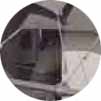 |
 |
||
 |
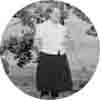 |
||
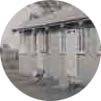 |
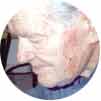 |
||
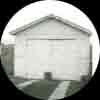 |
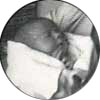 |
||
 |
 |
||
 |
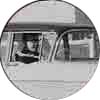 |
||
 |
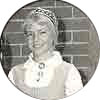 |
||
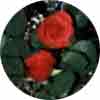 |
|||